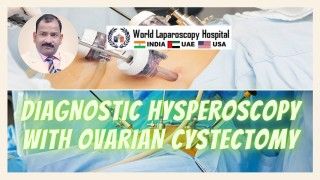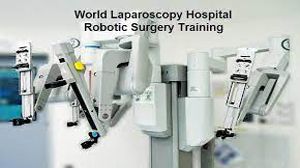Cutting-Edge Precision and Swift Recovery: Standard Laparoscopic Cholecystectomy
Add to
Share
710 views
Report
1 year ago
Description
Standard laparoscopic cholecystectomy stands as a remarkable surgical procedure, offering cutting-edge precision and facilitating a swift recovery for patients suffering from gallbladder-related conditions. The gallbladder, a small organ located beneath the liver, plays a crucial role in the digestive process. However, when it becomes inflamed or develops gallstones, it can lead to severe pain, digestive complications, and potential complications. Standard laparoscopic cholecystectomy is a minimally invasive surgical technique used to remove the gallbladder. This procedure has revolutionized the management of gallbladder disorders, replacing traditional open surgery with a more advanced and patient-friendly approach. The surgery begins with the administration of general anesthesia to ensure the patient's comfort throughout the procedure. Instead of a large abdominal incision, several small incisions, typically ranging from 0.5 to 1 centimeter in length, are made in the abdominal region. Carbon dioxide gas is gently introduced to create a working space, allowing for the insertion of a laparoscope—a thin, flexible tube equipped with a high-definition camera—along with other specialized surgical instruments. The laparoscope provides the surgeon with a magnified, real-time view of the surgical area, enabling precise visualization of the gallbladder and surrounding structures. The surgeon navigates through the small incisions using the laparoscopic instruments, carefully dissecting and removing the gallbladder. The benefits of standard laparoscopic cholecystectomy are numerous. Firstly, the minimally invasive nature of the procedure results in smaller incisions, leading to reduced post-operative pain, decreased scarring, and improved cosmetic outcomes. Patients typically experience shorter hospital stays, enabling them to return to their daily activities and normal life more quickly. The precision offered by standard laparoscopic cholecystectomy is another significant advantage. The surgeon's enhanced visualization allows for meticulous dissection and removal of the gallbladder, minimizing the risk of damage to surrounding organs and structures. This precise intervention promotes a more thorough removal of the gallbladder and reduces the chances of complications. Rapid recovery is a hallmark of standard laparoscopic cholecystectomy. Compared to traditional open surgery, patients often experience less post-operative pain, require fewer pain medications, and report a faster return to normal activities. The shorter recovery period allows individuals to resume their daily routines promptly and experience a smoother transition towards complete healing. Standard laparoscopic cholecystectomy has become the gold standard for gallbladder removal due to its exceptional precision, minimal invasiveness, and favorable patient outcomes. It requires the expertise of skilled surgeons trained in laparoscopic techniques, as they navigate through the intricate anatomy and perform the procedure with proficiency and confidence. In conclusion, standard laparoscopic cholecystectomy represents a significant advancement in surgical techniques, providing patients with cutting-edge precision and a swift recovery process. By adopting this minimally invasive approach, patients experience less pain, reduced scarring, and quicker return to their normal lives. As technology continues to advance, standard laparoscopic cholecystectomy will continue to serve as the preferred method for gallbladder removal, ensuring optimal patient care and outcomes in the management of gallbladder-related conditions. Standard laparoscopic cholecystectomy is a state-of-the-art surgical procedure that combines precision and minimal invasiveness to remove the gallbladder. This technique has revolutionized the treatment of gallbladder-related conditions, offering patients a faster recovery and improved outcomes compared to traditional open surgery. During a standard laparoscopic cholecystectomy, small incisions are made in the abdomen, through which specialized surgical instruments and a laparoscope—a thin tube with a camera—are inserted. The laparoscope provides a high-definition view of the surgical area, allowing the surgeon to navigate and operate with exceptional precision. The benefits of standard laparoscopic cholecystectomy are manifold. The smaller incisions result in reduced post-operative pain, shorter hospital stays, and faster recovery times compared to open surgery. Patients experience minimal scarring and can resume their daily activities sooner, leading to an improved quality of life. The precision offered by this technique is a key advantage. The surgeon's enhanced visualization allows for meticulous dissection and removal of the gallbladder while minimizing the risk of damage to surrounding organs and tissues. This precise approach ensures a thorough removal of the gallbladder and reduces the likelihood of complications. Rapid recovery is a hallmark of standard laparoscopic cholecystectomy. Patients generally experience less post-operative discomfort, require fewer pain medications, and have a quicker return to their normal routines. This accelerated recovery enables individuals to regain their physical well-being and resume their daily activities promptly. Standard laparoscopic cholecystectomy requires the expertise of skilled surgeons who are proficient in laparoscopic techniques. These surgeons possess in-depth knowledge of the intricate anatomy involved and have undergone specialized training to perform the procedure with utmost precision and safety. In summary, standard laparoscopic cholecystectomy represents a groundbreaking approach to gallbladder removal, delivering precise and minimally invasive treatment. With reduced pain, faster recovery, and improved outcomes, this technique has become the standard of care for patients with gallbladder-related conditions. By embracing this advanced surgical approach, patients can benefit from enhanced surgical precision and a swifter path to healing.
Similar Videos






